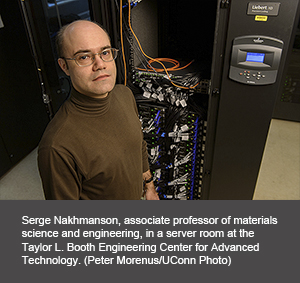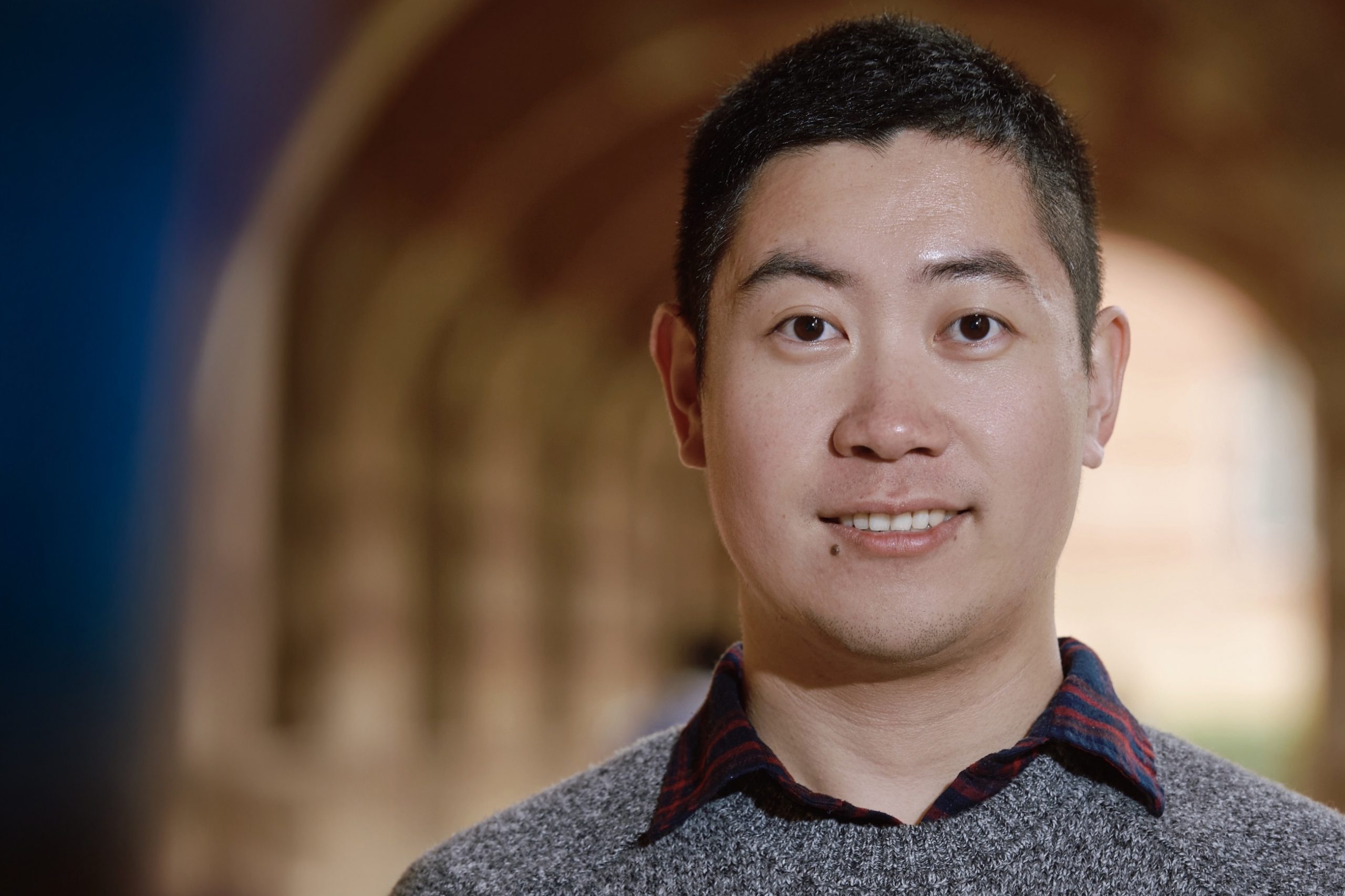 Serge Nakhmanson describes himself as a ‘digital alchemist.’ A former scientist with the Argonne National Laboratory, he specializes in the computer-based design and discovery of advanced multifunctional materials.
Serge Nakhmanson describes himself as a ‘digital alchemist.’ A former scientist with the Argonne National Laboratory, he specializes in the computer-based design and discovery of advanced multifunctional materials.
Nakhmanson spends countless hours in his research lab painstakingly tweaking the identities of individual atoms and altering their chemical bindings in an attempt to assemble new material templates that have superior physical or chemical behaviors. Those virtual materials may exhibit enhanced electrical conductivity or mechanical toughness. Or, in some cases, an entirely new material may be created that performs differently from anything else known to exist.
Rational design
“I consider myself a digital alchemist,” says Nakhmanson, who joined UConn’s School of Engineering as a full-time associate professor last August. “We are trying t o design new materials on the computer and we want to do this in some rational fashion. That is, as opposed to an Edisonian approach, where you’re baking random compounds in 100 different ovens in the hope that something interesting serendipitously comes out of one of them.”
o design new materials on the computer and we want to do this in some rational fashion. That is, as opposed to an Edisonian approach, where you’re baking random compounds in 100 different ovens in the hope that something interesting serendipitously comes out of one of them.”
Nakhmanson is one of three new faculty members specializing in computational materials theory who have been added to UConn’s Institute of Materials Science (IMS) over the past two years as part of a targeted expansion of the University’s materials genomics and informatics research cluster. Those new faculty are in addition to 10 computational modeling specialists already on staff.
Materials genomics is critically important. Two years ago, President Barack Obama launched the Materials Genome Initiative, encouraging private industry and academic institutions like UConn to accelerate and share their research and development of basic materials science in order to spur innovation – much like geneticists shared DNA data through the Human Genome Project.
Read the full story here.



